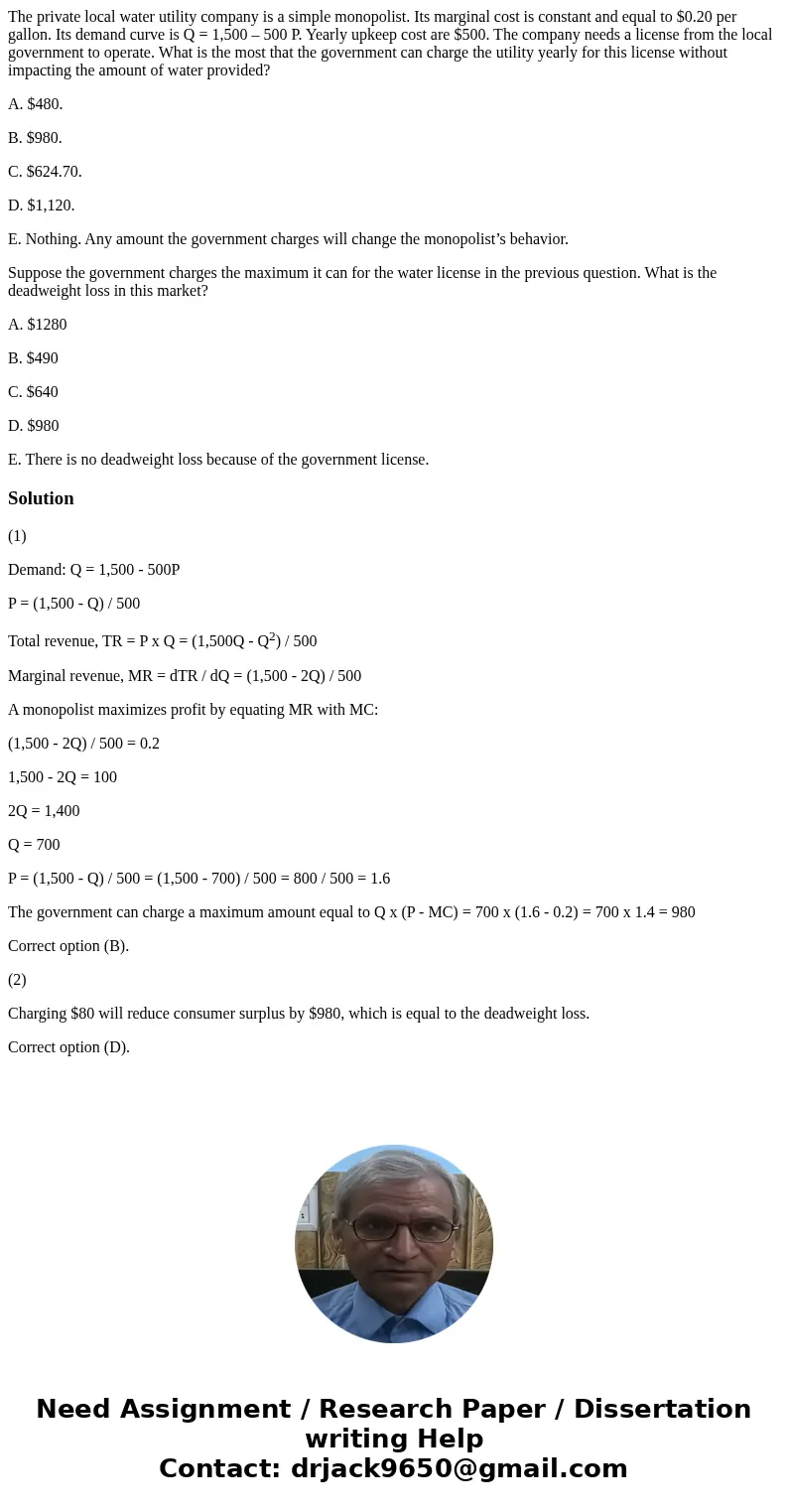The private local water utility company is a simple monopoli
The private local water utility company is a simple monopolist. Its marginal cost is constant and equal to $0.20 per gallon. Its demand curve is Q = 1,500 – 500 P. Yearly upkeep cost are $500. The company needs a license from the local government to operate. What is the most that the government can charge the utility yearly for this license without impacting the amount of water provided?
A. $480.
B. $980.
C. $624.70.
D. $1,120.
E. Nothing. Any amount the government charges will change the monopolist’s behavior.
Suppose the government charges the maximum it can for the water license in the previous question. What is the deadweight loss in this market?
A. $1280
B. $490
C. $640
D. $980
E. There is no deadweight loss because of the government license.
Solution
(1)
Demand: Q = 1,500 - 500P
P = (1,500 - Q) / 500
Total revenue, TR = P x Q = (1,500Q - Q2) / 500
Marginal revenue, MR = dTR / dQ = (1,500 - 2Q) / 500
A monopolist maximizes profit by equating MR with MC:
(1,500 - 2Q) / 500 = 0.2
1,500 - 2Q = 100
2Q = 1,400
Q = 700
P = (1,500 - Q) / 500 = (1,500 - 700) / 500 = 800 / 500 = 1.6
The government can charge a maximum amount equal to Q x (P - MC) = 700 x (1.6 - 0.2) = 700 x 1.4 = 980
Correct option (B).
(2)
Charging $80 will reduce consumer surplus by $980, which is equal to the deadweight loss.
Correct option (D).

 Homework Sourse
Homework Sourse